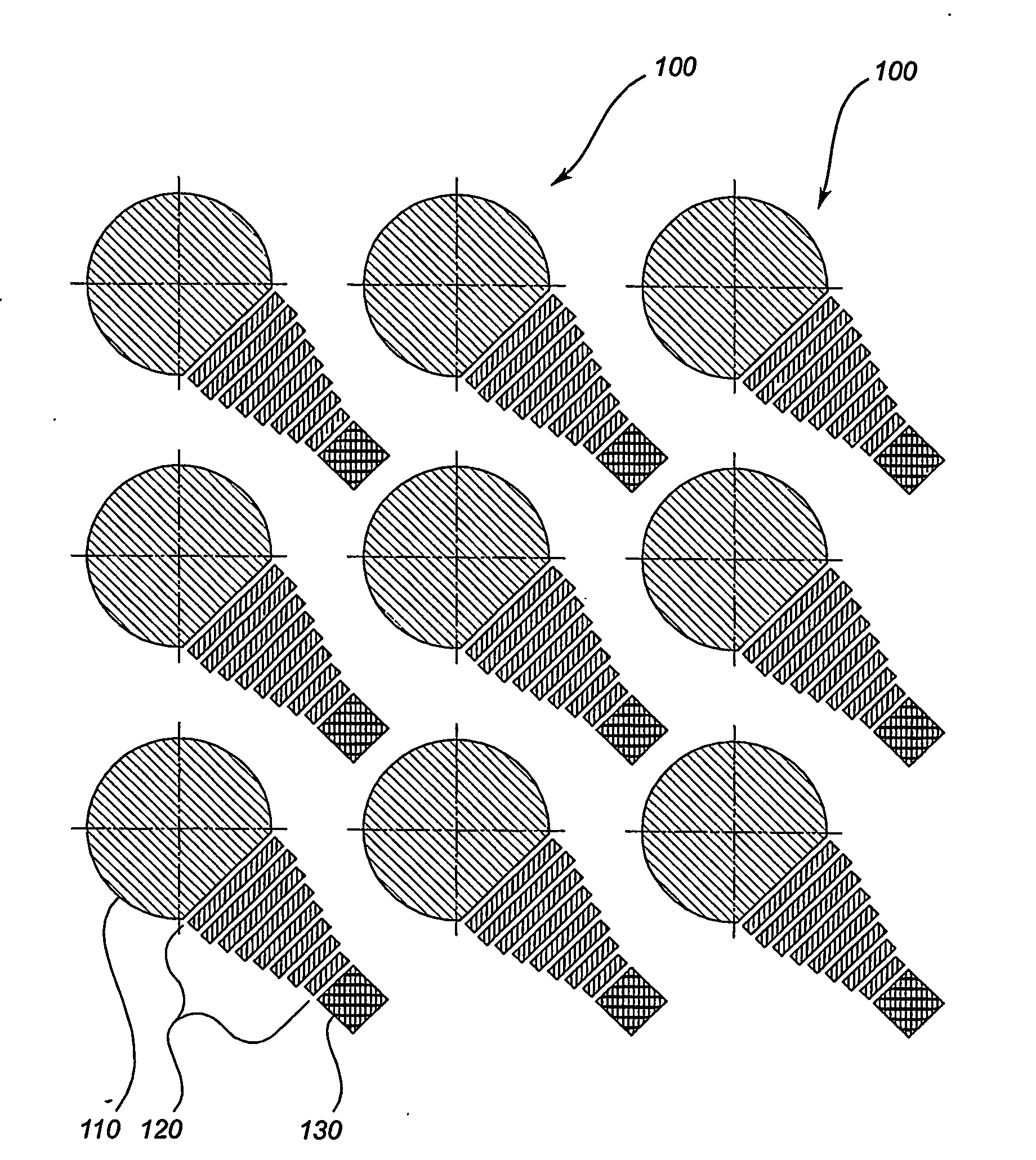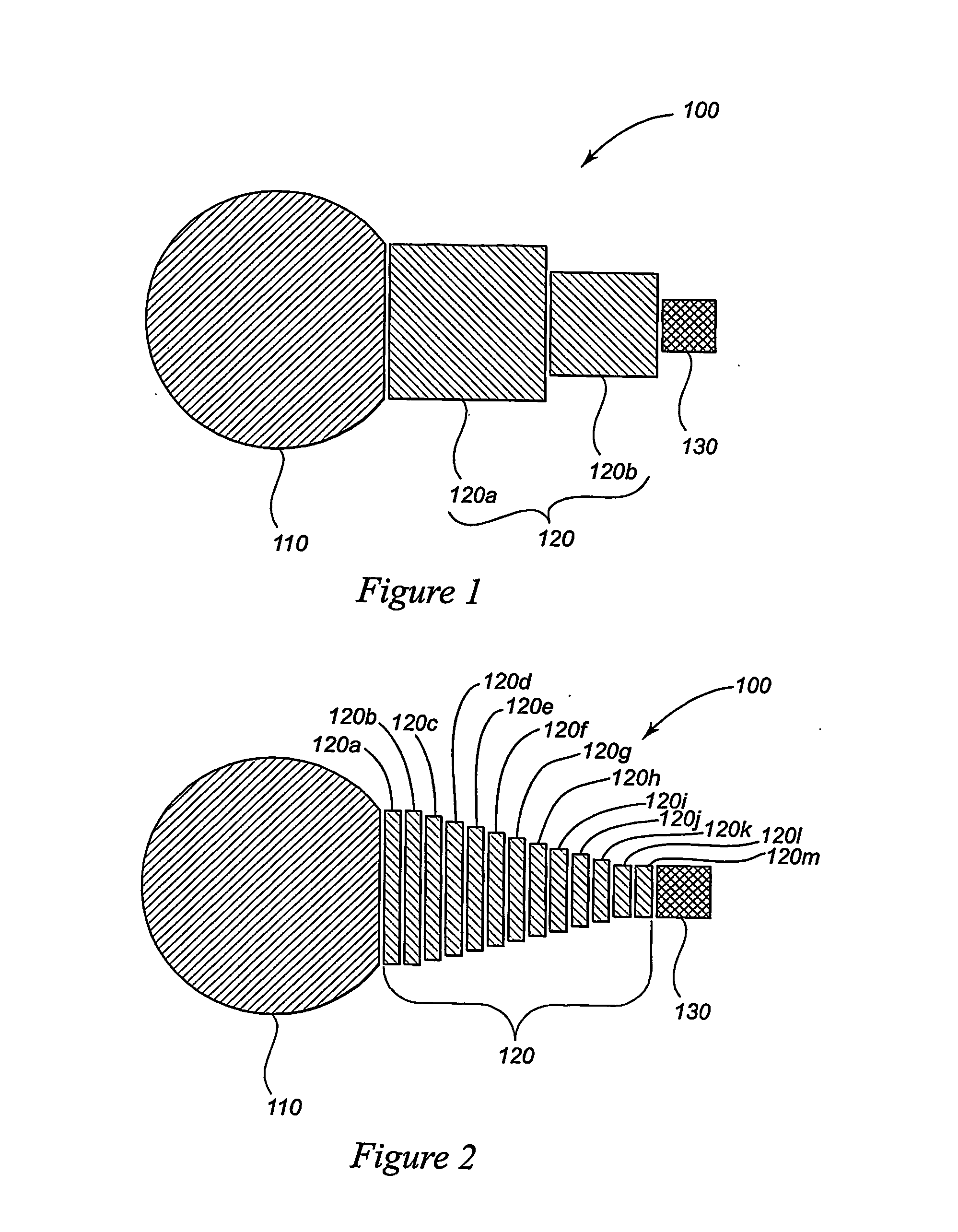Electrowetting sample presentation device for matrix-assisted laser desorption/ionization mass spectrometry and related methods
a matrix-assisted laser and sample preparation technology, which is applied in the field of sample preparation devices and methods, can solve the problems of significant variations in peak intensity, resolution and mass accuracy, and the severe limitation of present-day maldi-tof-ms sample supports with respect to liquid sample volume,
- Summary
- Abstract
- Description
- Claims
- Application Information
AI Technical Summary
Benefits of technology
Problems solved by technology
Method used
Image
Examples
example 1
[0092]The details of the stepwise fabrication of an electrowetting-on-dielectric apparatus of the present invention follow:
[0093]The surface of a 4″ silicon wafer was exposed to wet O2 / N2 at 1045° C. for 45 min to prepare a Thermal Oxide (2500 Å) insulator film.
[0094]The first metal conductive layer (control electrode elements and interconnects), comprised of 60 Å of Ti / W, 300 Å of Au and 60 Å of Ti / W was sputtered onto the Thermal Oxide surface.
[0095]Photoresist was spin-coated and patterned by contact printing to define the electrode pattern. The metal conductive layer was wet etched at room temperature employing the following sequence: (1) 30% H2O2 in TFA for 90 sec; (2) 30% H2O2 for 30 sec; and (3) 30% H2O2 in TFA for 90 sec.
[0096]Photoresist was stripped using reagent EKC830 for 10 min followed by reagent AZ300 for 5 min. The wafers were rinsed in deionized water and dried in a vacuum spinner.
[0097]Unstressed silicon nitride (dielectric, 1000 Å) was deposited by PECVD (Plasma E...
example 2
[0105]An electrowetting-on-dielectric sample presentation device of the present invention was fabricated as described in the example immediately above. One sample presentation element of the device is pictured in FIG. 7B. When a 10 μL droplet containing 2,4-dihydroxybenzoic acid matrix (10%, w / v) in water was applied to the surface of the device with all electro-wettable zones actuated (hydrophilic), the droplet initially filled the lower three electro-wettable zones. As the droplet was allowed to evaporate over the course of 30 minutes, the lower electro-wettable zones were sequentially deactivated from bottom to top thereby confining the droplet to the upper-most electro-wettable zone. Finally, when the droplet dried, the field of matrix crystals shown in FIG. 7B was obtained.
PUM
 Login to View More
Login to View More Abstract
Description
Claims
Application Information
 Login to View More
Login to View More - R&D
- Intellectual Property
- Life Sciences
- Materials
- Tech Scout
- Unparalleled Data Quality
- Higher Quality Content
- 60% Fewer Hallucinations
Browse by: Latest US Patents, China's latest patents, Technical Efficacy Thesaurus, Application Domain, Technology Topic, Popular Technical Reports.
© 2025 PatSnap. All rights reserved.Legal|Privacy policy|Modern Slavery Act Transparency Statement|Sitemap|About US| Contact US: help@patsnap.com



